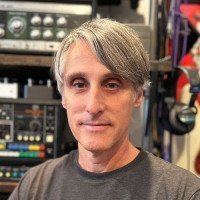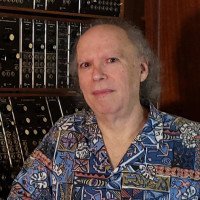Get Under the Hood








Sound on Sound Magazine's 2024 Gear of the Year, "Best Software Instrument"!
Computer Music "10 out of 10!" with "Performance" Award!
Pro Soloist is the latest in Cherry Audio's roster of ultimate "what if?" virtual instruments. Featuring the precision-crafted and circuit-modeled DSP designs of award-winning developer Mark Barton, Cherry Audio's Pro Soloist goes far beyond emulating the treasured, preset-based monophonic analog synth originally released by ARP in 1972. Pro Soloist not only exactingly reproduces the expressive controls, 30 presets, and the unique underlying architecture of this prog rock classic, it breaks it out of its cage by making it fully programmable and expanding it with full polyphony, splits and layers, a mod matrix, integrated studio-quality effects, and more.
At the beginning of the 70s, analog synthesizers were just making their way into the hands of working musicians, and their operation was still a mystery to most folks outside of a college music lab. To avert potential user intimidation and bring synthesis to the masses, manufacturers introduced simple monophonic preset synths that were intended to sit atop an organ. ARP led the charge in 1970 with the Soloist, the first commercial preset synthesizer, featuring 18 presets and basic controls.
In 1972, ARP followed it up with the Pro Soloist, updating the analog preset control with revolutionary digital read-only memory chips (which improved tuning stability) and expanding the preset selection to 30. Most impressive was the introduction of an innovative “touch sensor” keyboard (now commonly known as aftertouch), where pressing harder after playing a note introduces changes to the sound, allowing highly expressive playing. Specifically, the Pro Soloist’s touch sensor controls enabled pitch bend, wow, growl, brilliance, volume, and vibrato. This was heady stuff in the early 70s, and the Pro Soloist proved popular with musicians for its ability to rapidly emulate lead instrument sounds such as horns, strings, woodwinds, and more.
Despite its association with progressive rock, the Pro Soloist was popular with acts as varied as Tangerine Dream, Gary Numan, Kansas, Herbie Hancock, Patrick Moraz, Styx, John Entwistle, Parliament, Billy Preston, Vangelis, David Bowie, Brian Wilson, the Ohio Players, Chick Corea, Prince, and Josef Zawinul. Most notable was Tony Banks of Genesis, for whom the Pro Soloist was his first synthesizer. The track “The Cinema Show” on the 1973 album Selling England by the Pound showcases many of the Pro Soloist’s presets building up to his epic solo featuring the “Fuzz Guitar 1” preset.

Cherry Audio has received frequent requests to reproduce this oft-forgotten gem — one of those came from frequent collaborator Mark Barton (GX-80, Novachord + Solovox, Miniverse, and others). He has programmed an incredibly authentic reproduction of the analog signal path and original presets, and together we have substantially expanded the Pro Soloist’s capabilities. Cherry Audio has added a dual-layer voicing architecture, with 16 polyphonic voices per layer, that enables two different presets simultaneously, with independent panning for rich stereo timbres and complex, layered sounds. Pro Soloist also supports a split keyboard mode, channel and polyphonic aftertouch with capable controllers, and even an option to simulate polyAT with a mono aftertouch controller for expressive performance possibilities beyond the standard touch sensor effects.
With its distinctive three-panel interface, this Pro Soloist is far more than a preset synth. In Performance mode, each original paddle preset has been precisely recreated with MIDI-mappable switches. In Edit mode, we’ve exposed all of its unique analog synthesis architecture parameters, most notably, the fully-variable, five parallel bandpass filter “Resonator Bank” - the key to the Pro Soloist’s realistic acoustic orchestra timbres. Additionally, we’ve revealed the LFO and ADSR/AR envelopes used to create the presets, and elevated the sound design and performance possibilities with a "Super Wave" oscillator and a powerful six-slot modulation matrix. The Arp/FX mode rounds it out with a syncable arpeggiator and a dozen studio-quality effects for distortion, phaser, flanger/chorus, echo, and reverb.
In summary, Cherry Audio has elevated this bare-bones monophonic lead synth into a massive, polyphonic powerhouse beyond anything imagined 50 years ago, and ideal for today's music production environments.
To get users up and running with Pro Soloist, Cherry Audio and Tim Shoebridge have again teamed up to create introductory tutorial videos walking users through the history and features of this iconic virtual synthesizer.
Pro Soloist includes 450 wondrous presets
Producers will find immediate inspiration in Pro Soloist's extensive preset library, created by talented sound artists led by veteran sound designer James Terris. And don't miss the Vintage Vibes Preset Pack (sold separately), featuring an additional 100 additional presets by James Dyson.

James is Director of Sound Design, responsible for preset programming and curation at Cherry Audio. He is a long-established sound designer and musician based in the San Francisco Bay Area who has worked with Dave Smith Instruments/Sequential, Pioneer DJ, Apple, and Hans Zimmer’s Remote Control.

Matia (INHALT) Simovich has shared his unique sound design skills with various leading musical instrument manufacturers such as Sequential/Dave Smith Instruments, Akai Professional, Elektron, and more. He has collaborated with Peter Baumann (Tangerine Dream), and produced Body of Light’s Billboard charting LP “Time to Kill."

Musician, modular synthesis pioneer, designer of the Syndrum, founder of MRB Labs, and the award-winning developer and DSP designer behind Cherry Audio's Pro Soloist, Novachord + Solovox, GX-80, Miniverse, Rackmode Signal Processors, and more.

Veteran sound designer, producer, film composer, and podcaster. Huston has contributed sounds to an endless array of popular products by Toontrack, Izotope, Synthogy, Kilohearts, Roland, Alesis, Spectrasonics, and Sequential.

Drew Schlesinger began developing third-party sounds for Casio CZ synths in 1986, leading to a career designing presets for over 200 products from 30 companies including Roland, Korg, Kurzweil, Alesis, E-mu, Ensoniq, TC, Lexicon, Eventide, and others. After a 20-year hiatus in the corporate world, he has recently returned to music and sound design.

James is a freelance sound designer and musician based in the UK. He creates third-party preset packs as JD Soundsets. He draws inspiration and influence from Tangerine Dream, 80s film scores, and others and has been a long-time sound designer for Cherry Audio, Modal, and IK Multimedia.
A best-in-class virtual instrument based on ARP's 1972 preset-based monophonic analog synth
Exactingly reproduces the expressive controls and 30 presets, and surfaces the unique underlying analog synthesis architecture to make it fully programmable
Massive dual-layer voicing architecture with 16 polyphonic voices per layer: two different Pro Soloist style sounds simultaneously playable, in either a keyboard split or stacked layer mode, with discrete controls for layer volume and panning
Three-panel interface: Performance mode, with the original paddle presets; Edit mode, revealing all of the original's unique analog synthesis architecture parameters; and Arp/FX mode
All Pro Soloist voicing parameters reproduced and exposed, including the five parallel 2-pole bandpass filters of the Resonator Bank, expanded with individual frequency curves
Touch Sensor Effects controls to apply aftertouch to volume, brilliance (filter), and portamento, with adjustable touch sensitivity
Mono (retrigger or legato, with low, last, or high-note priority) and polyphonic modes
Supports channel and polyphonic aftertouch when using capable controllers, along with a "last" note option to simulate polyphonic aftertouch with a monophonic aftertouch controller for more expressive performance possibilities
Voltage-controlled oscillator with sawtooth and pulse waves, plus a "Super Wave" option for fatter tones
VCO modulation with ADSR PWM, AR PWM, LFO PWM, and LFO FM
24dB/oct Voltage-controlled filer (VCF) with filter invert and modulation with ADSR, AR, LFO, Growl (a specialized low-frequency oscillator), velocity, and keyboard tracking
Voltage-controlled amplifier (VCA) with modulation by ADSR, AR, LFO, and velocity, and independent per-layer control over volume and panning for expansive and breathtaking stereo tones
Tempo-syncable LFO with sine, ramp, sawtooth, and square waveforms
Resonant highpass filter with cutoff frequency from 20 Hz to 1300 Hz
Resonator Bank with five parallel bandpass filters with continuously variable frequency and resonance controls, all individually modulatable via the Mod Matrix. The frequency curves of the originals are provided and any of the resonators can be set to individually to any of the curves, in any combination.
ADSR (attack/decay/sustain/release) and AR (attack/release) envelope generators
Powerful but easy-to-use Modulation Matrix with six slots and simple click-to-assign functionality: 22 sources and 58 destinations, including Pro Soloist's integrated effects
Arpeggiator with MIDI tempo sync with Down, Up, Up/Down, and Random
Panel Control for selecting layer controls, including utility functions for duplicating and exchanging synthesis and effects parameters between layers and presets
Preset Paddles includes each of the 30 original Pro Soloist factory presets
450 presets created by a talented team of sound design veterans, easily accessible in a convenient preset browser
12 studio-quality integrated effects: distortion, 2/4/6/8 stage phaser with sync, flanger/chorus with sync, three types of stereo echo/delay with sync, and five types of reverb, with easy-to-access global or layer settings
Complete MIDI control and DAW automation for all controls, with easy-to-use MIDI learn and mapping (Preset and Global)
Cherry Audio's popular Focus zoom-in feature, as well as standard UI zoom and resize via drag
Complete documentation available directly online from the instrument or in downloadable PDF format
Highly optimized DSP for optimal performance
User-adjustable oversampling control
Also available: Vintage Vibes for Pro Soloist, with an additional 100 presets by sound designer James Dyson showcasing more of Pro Soloist’s use of touch sensors and aftertouch, modulation, splits and layers, outstanding arps, atmospheric pads, stunning sound effects, basses, keys, and leads, and brass.
Pro Soloist is available in AU, VST, VST3, AAX, and standalone formats.
A free 30-day demo of Pro Soloist is available. This demo will play white noise periodically, but is otherwise unlimited.
macOS Requirements: macOS 10.13 or above. macOS 13 Ventura supported. 64-bit required. Native Apple M1 or greater processor support, including Ultra. 3.4 GHz Quad-Core or M1 CPU with 8GB of RAM recommended.
Windows Requirements: Windows 7 or above (including Windows 11), 64-bit required. 3.4 GHz Quad-Core computer with 8GB of RAM recommended.
Hard disk space: 105 MB
NOTE: Internet connection required for product activation.
ARP is a registered trademark of KORG Inc. There is no association, affiliation or endorsement of Cherry Audio or its products by KORG.